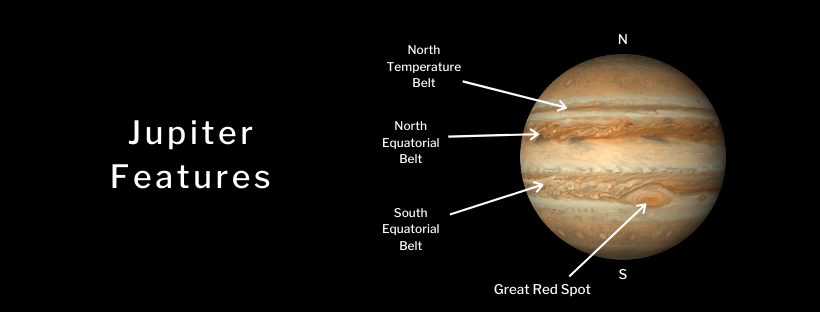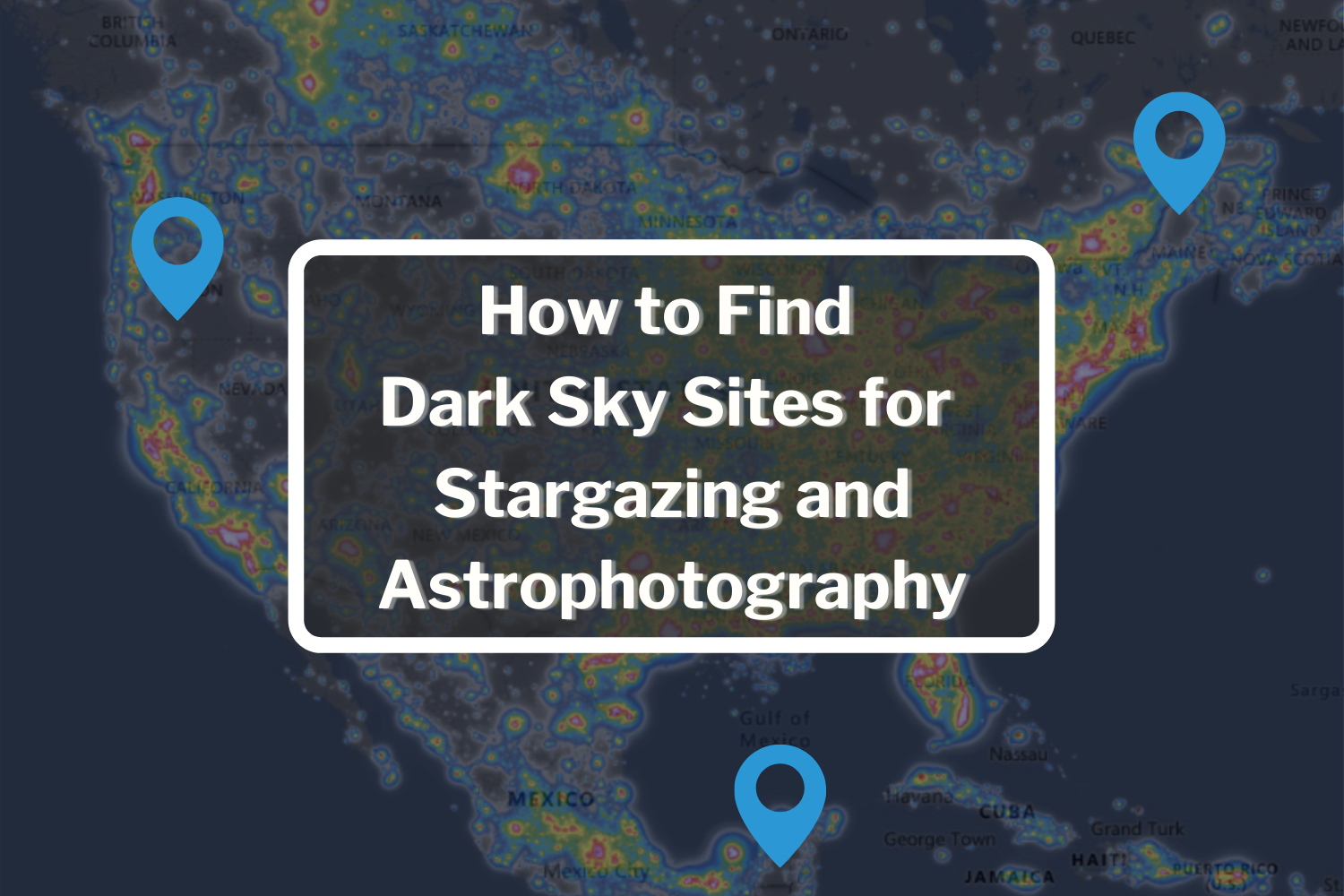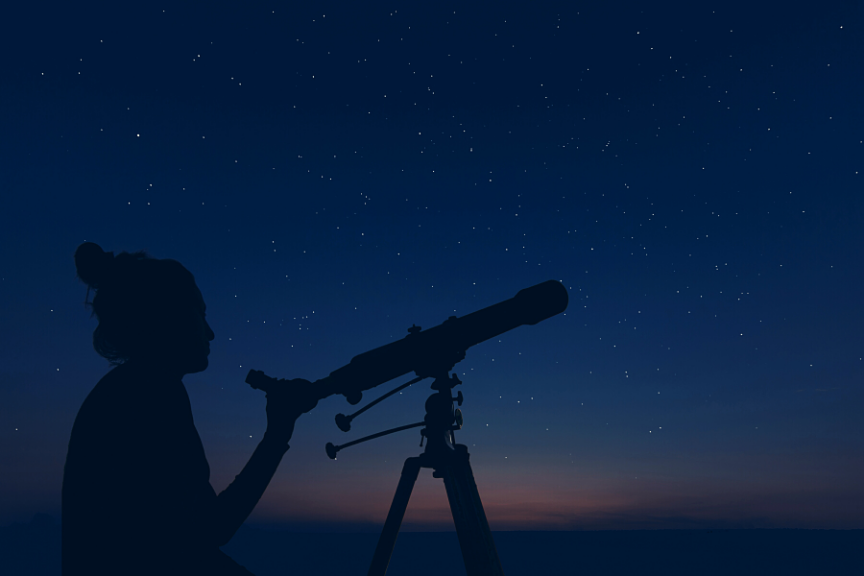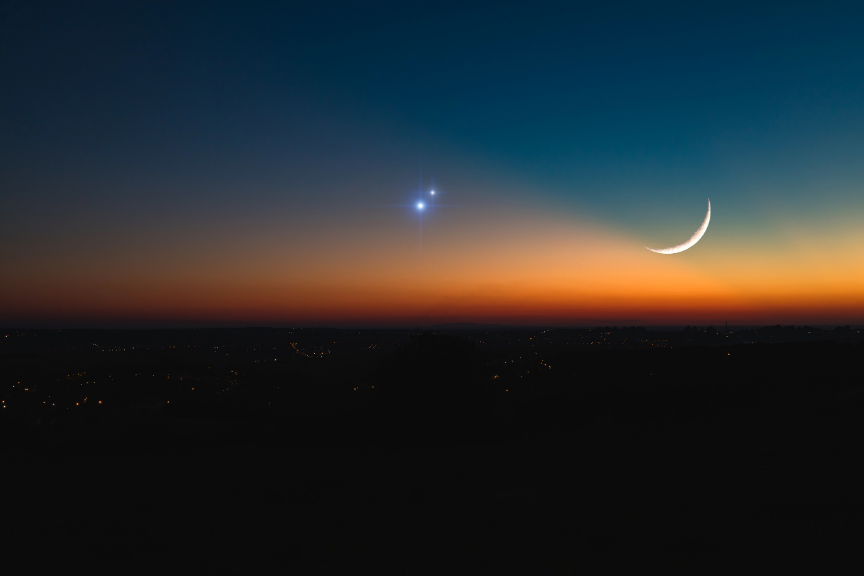How to See the Planets with a Telescope
Observing the planets through a telescope is a top bucket list experience for many.Differenttypes of telescopes will reveal different details of the planet you want to see. A small telescope can reveal details on giant planets because of how much light they reflect. Medium and large telescopes will provide views of Venus, Mars, Jupiter, and Saturn, even in light-polluted areas.

How to See Mercury with a Telescope
The best time to see Mercury is when it’s positioned either farthest west of the Sun in the eastern morning sky or farthest east of the Sun in the evening sky. Be careful when looking for Mercury, as it will always be close to the Sun. Never point your telescope at the Sun without properequipment, contact us if you have questions!You may not see many details of Mercury, but you can observe its various phases.
Pro tip: If you can locate Mercury, use a yellow or orange filter to reduce the sky’s blue light.
Did you know? A year on Mercury takes 88 Earth days.

How to See Venus with a Telescope
Seeing Venus with a telescope is easier than seeing Mercury. Venus shines brighter than Mercury and can lie farther from the Sun, helping make it more visible in the daytime. Apart from being able to see its phases, you can see the planet’s size changes too!
What Venus Features Can I See with a Telescope?
Features in Venus’ atmosphere range from dusty shadings to bright spots. Look for a big C- or Y-shaped feature centered on the planet’s equator. You can observe Venus' different phases while it orbits around the Sun, just like Mercury and the Moon.
Pro tip: A violet filter can help you see the most well-known Venus features but use it with at least an 8-inch telescope as it doesn’t allow much light through.
Did you know? Venus is referred to as Earth's sister planet because they are similar in size.

How to See Mars with a Telescope
Once you have found Mars with your telescope, use high magnifications to observe it, right to the limit of the atmosphere's steadiness. Focus on a small area or one feature at a time. Don't observe the entire visible disk or rapidly move your gaze from one feature to another. Enjoy the views!
Mars and Earth are closest once every 26 months, but you don't have to wait until then to observe it. If Mars' atmosphere is transparent, you'll see detail several months before and after opposition.
What Mars Features Can I See with a Telescope?
- Mars’ atmosphere features several cloud types. Seasonal examples occur because of heating and cooling.
- Discrete clouds are localized and get carried along as the planet rotates.
- You also can observe morning and evening clouds — bright, isolated patches of surface fog appearing at martian sunrise and sunset.
- Evening clouds are generally larger and more numerous.
- Observe Orographic clouds, made from water created by wind passing over martian mountains and volcanoes.
Pro tip: To get the best view of clouds on Mars, use a blue or violet filter. To get the best view of low-altitude clouds, use a green filter. A telescope 8-inches or larger is recommended (but not required).
Did you know? Mars has the largest dust storms in the solar system! They can last for months and cover the entire planet.

How to See Jupiter with a Telescope
Jupiter is the celestial object with the most observable detail similar to the Sun and Moon. You can see Jupiter with any size telescope. Even small scopes can provide observable detail, such as its dark stripes (the North and South Equatorial Belts).
Pro tip: A dark blue filter will enhance the planet’s zones. Blue filters also sharpen bright cloud features. A red filter brings out details along Jupiter’s equator and sharpens contrast in the major belts.

What Jupiter Features Can I See with a Telescope?
- The Great Red Spot.
- Jupiter's Moons: Io,Europa, Ganymede, and Callisto.
- An eclipse happens when one of Jupiter's moons move through Jupiter’s shadow.
- An occultation happens when one of Jupiter's moons disappears behind the planet.
- A transit happens when a moon moves in front of Jupiter. Best views come when the satellites appear against the gas giant’s dark belts.
- A shadow transit happens when a moon’s shade crosses Jupiter’s disk. Shadows appear as small black dots through telescopes.
Watching Jupiter on a nightly basis can bring many spectacular views. In addition to the changing positions of its four largest moons, the planet’s rotation brings nearly all of its possible visible area into view in a single night.
Did you know? A day on Jupiter, or one full rotation, is 9.9 hours!

How to See Saturn with a Telescope
One of the most stunning objects to view through a telescope is Saturn, with its large, unmistakable rings. Saturn will impress in any size telescope. An 8-inch telescope will provide observations of Saturn’s most known features like details within the rings, color differences, and textures.
What Saturn Features Can I See with a Telescope?
- The rings around Saturn. Look for the Cassini Division, a dark gap between its two brightest rings.
- Bright and dark spots on the planet's surface that can change overnight.
- Color on the planet. Saturn’s zones appear off-white, slate-gray, or yellow. Saturn’s belts look bluish-gray, brown, and red.
Pro tip: Use red, orange, or yellow filters to bring out Saturn’s zones and belts. Occasional bright patches look best through a green filter. Highlight the rings using a light green or light blue filter.
Did you know? You cannot stand on Saturn because it is mostly made of Helium gas!

How to See Uranus with a Telescope
The joy of observing Uranus comes with the difficulty of locating it through a telescope. You will also have to know precisely its location and the stars around it since it is easy to confuse it with the background stars.Through a small telescope, greenish Uranus appears as a slightly elliptical disk because of its rapid rotation. The planet moves slowly. Features of Uranus are usually a haze, some astronomers have observed markings and belts.
Did you know? Uranus is ablue-green color as a result of the methane in its mostly hydrogen-helium atmosphere.

How to See Neptune with a Telescope
Neptune can easily be seen with either binoculars or a telescope. You’ll observe a small blue disk that shines at about magnitude 7.7. Neptune's largest moon, Triton, shines at magnitude 13.5 and is observable with 10-inch or larger telescopes.
Just like Uranus, the thrill of observing Neptune comes when you first spot it through your telescope. It lies farther from the Sun than Uranus, so Neptune moves even slower.
Did you know? The methane in Neptune's upper atmosphere absorbs the red light from the Sun but reflects the blue light from the Sun back into space, causing it to appear blue.
Observing the planets is easier and more fun with a telescope! Plan your observing nights with our astronomyevents calendar. Contact us if you have any questions. Clear skies!












John Edward Hayes
December 25, 2022
Brilliant info thankd